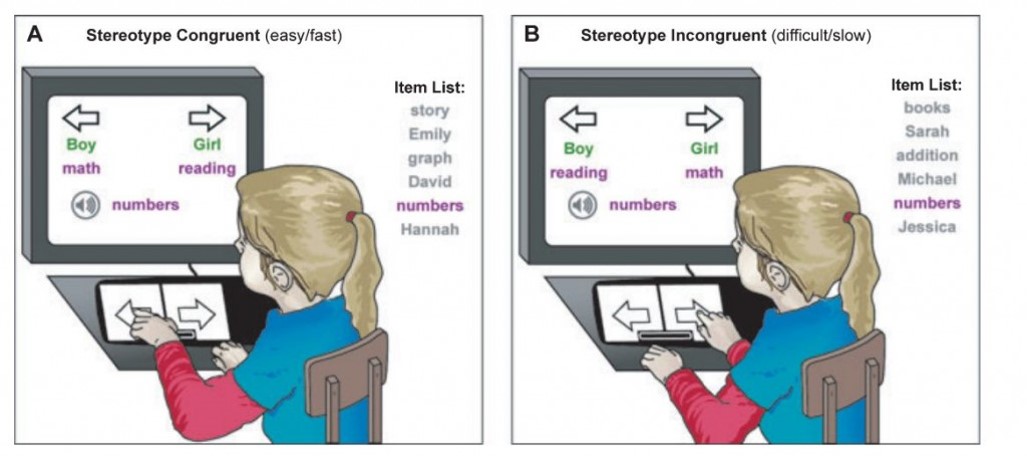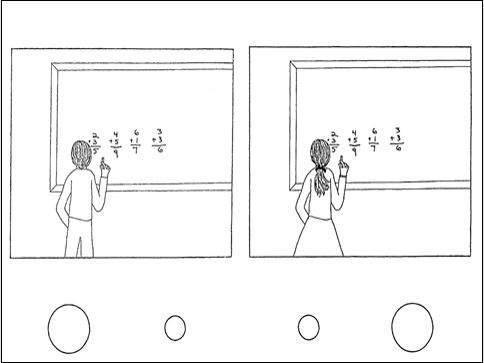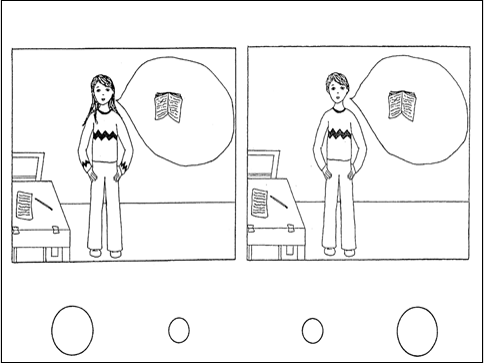Implicit Social Cognition
Abstract
Recent studies suggest interesting individual differences between male and female students. In particular, for female students who have internalized the cultural stereotype that math is a male discipline do not perform as well on standardized math achievement tests, as do males who have internalized the same stereotype. In addition, female students who demonstrate the cultural math-gender stereotype have lower grades in an undergraduate math course, thus suggesting that cultural stereotypes linking math with male can impact math performance in girls. These patterns are important developmentally, because children who have reduced interest in future academic courses and occupations that they perceive as being incompatible with their own academic self-concept.
Methods and Procedures
Implicit Measure
The Child Implicit Association Test (ChIAT) is a child-friendly adaptation of the Implicit Association Test (IAT) developed by Greenwald et. al. (1998). It is a computerized categorization task that measures relative strengths of associations among concepts.

During a math-gender stereotype IAT, children classify stimuli representing boy, girl ,math and reading.
In one instructional condition (A), math words and boy names share a response key, with reading words and girl names sharing another response key.
In the other instructional condition (B), two of the response assignments are reversed, such that math and girl share one key while reading and boy share the other key.
Children with a strong gender stereotype about math should respond faster to the instructional condition (A) than (B).
Explicit Measure
The explicit math-gender stereotype measure was created as two Likert-scale questions using images from Harter & Pike’s (1984) Pictorial Scale.
For each question, children will be shown two pictures of a child and respond by reporting:
- Which character (boy or girl) they themselves believed possessed an attribute (e.g. liking math) to a greater
- Whether they believed the character possessed the attribute “a little” or “a lot”.
This will have been done by their pointing to one of the two circles (1.1 and 2.3cm in diameter).
One question will request selecting the boy or girl character as “liking to do math more.”

The other question will request selecting the boy or girl character as “liking to read more”.

The two scores will be subtracted from each other to arrive at the explicit score with lower and upper bounds of 2 and +2.